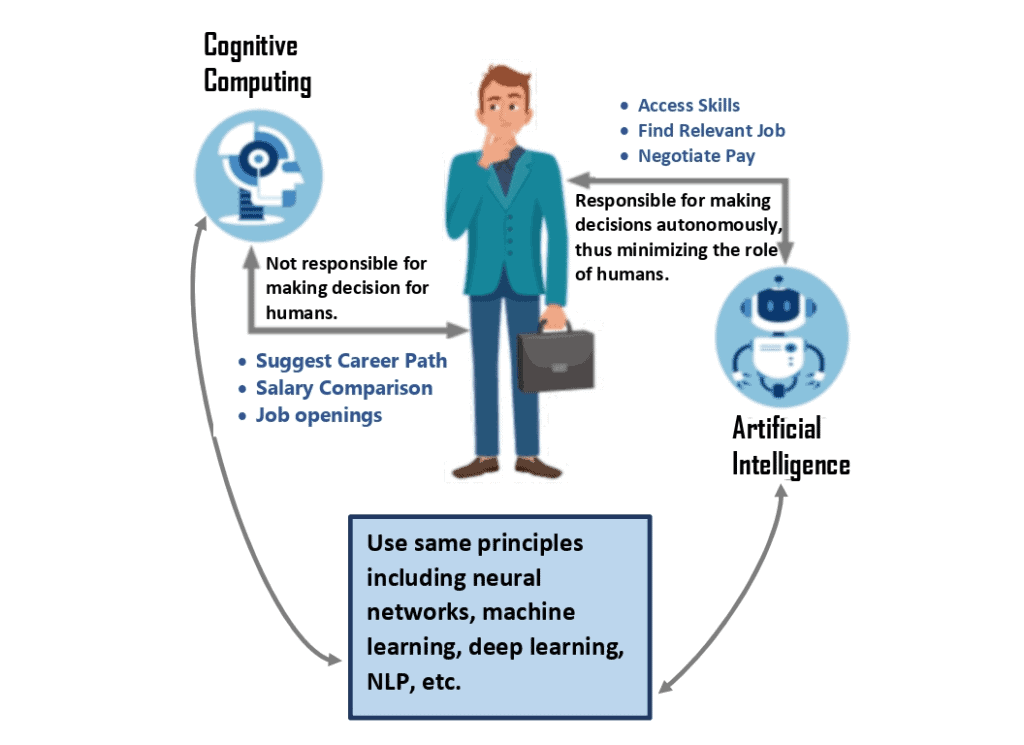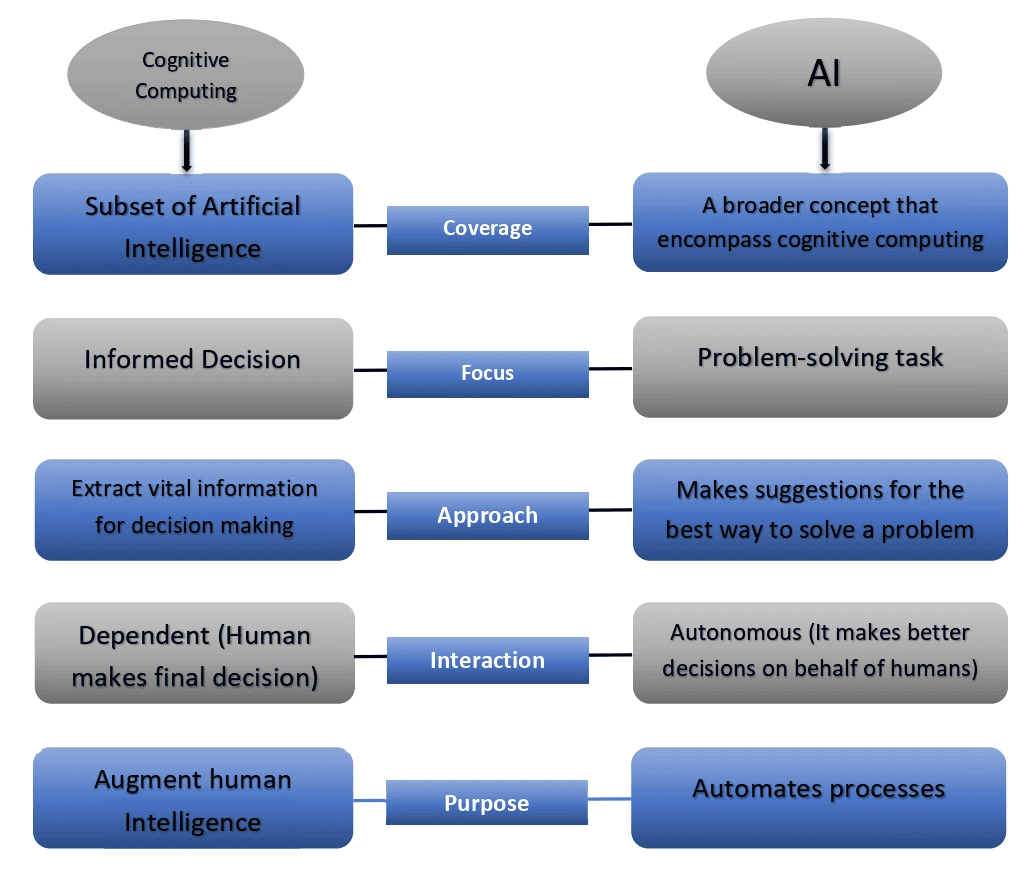1. Overview
In this tutorial, we’re discussing two important concepts: AI and Cognitive Computing. Also, this article will highlight the difference between the two concepts.
2. AI and Cognitive Computing
All of the technological advancements that allow machines to understand and behave like humans are collectively referred to as artificial intelligence (AI). It covers a wide range of topics, including machine learning (ML) and deep learning, as well as neural networks, image identification, and natural language processing (NLP).
People often mistake cognitive computing for AI since it uses the same technology. However, these systems’ output and how they interact with people are very different.
Before comparing the two concepts, let’s do an overview of each of these concepts.
2.1. Artificial Intelligence (AI)
When a machine imitates “cognitive” processes that people often connect with other human brains, such as “learning” and “problem-solving,” the phrase “artificial intelligence” is used.
Artificial intelligence is “the emulation of human cognitive processes by machines, particularly computer systems.” These include acquiring knowledge and rules for utilizing it (learning), using the rules to arrive at approximations or firm conclusions (reasoning), and self-correction.
AI is an all-embracing phrase for any systems of technologies, algorithms, approaches, and theoretical frameworks that allow computer systems to do operations that often call for the human intellect. AI gives improved intelligence. Thus, it exceeds human understanding, precision, agility, and strength.
Humans are less necessary owing to artificial intelligence. A typical example is chatbots. A chatbot employs AI to respond to basic client inquiries and handle quick tasks autonomously. This eases the strain on call center workers and frees them up to face more valuable and productive duties. Hence, customers’ experience will be improved since they will receive responses more swiftly and effectively than they would from a person.
2.2. Cognitive Computing
Fundamentally speaking, cognitive computing systems are tools that assist humans in making intelligent decisions. They provide decision-makers with the information they need to make better data-driven decisions.
Large amounts of data are managed by cognitive computing systems. It does a lot of repetitive analysis and revises their conclusions when new data enters the system. Cognitive computing systems employ self-learning algorithms. These algorithms depend on AI technologies such as data mining, image/voice recognition, and natural language processing to tackle complex issues.
Companies that provide financial services employ analytical capabilities of cognitive computing to identify the most appropriate products to satisfy the demands of their customers. Also, cognitive computing in the medical field is assisting doctors in improving their diagnoses and personalizing their course of therapy.
These systems can think, learn, and interact with people much as humans do. They possess the same ability for symbol and notion handling that humans have:

Let’s recap the explanations of the two concepts using a diagram. Imagine a situation when a person is contemplating a career change.
As seen in the diagram above, an AI assistant will automatically evaluate the skills of the person seeking a job, identify a position that matches those skills, and negotiate compensation and benefits. Finally, the system will inform the person of the decision reached on his behalf after the process.
While a cognitive assistant provides the job seeker with crucial information like further education needs, wage comparison information, and vacant opportunities, it will also make suggestions about other career options. The person seeking a job must still make the final decision.
Hence, we may claim that cognitive computing enables us to leverage technology to make more intelligent judgments. On the other hand, AI is based on the notion that computers can make better judgments for us.
3. Cognitive Computing vs. AI
Let’s discuss the similarities and distinct differences between cognitive computing and artificial intelligence. We’ll perform the comparison based on some key terms: technology, interaction, approach, focus, purpose, and applications:
4. Summary
Let’s summarize the key difference between AI and cognitive computing using a diagram:

5. Conclusion
In this article, we discussed AI and cognitive computing. Most importantly, we highlighted the key difference between AI and cognitive computing.